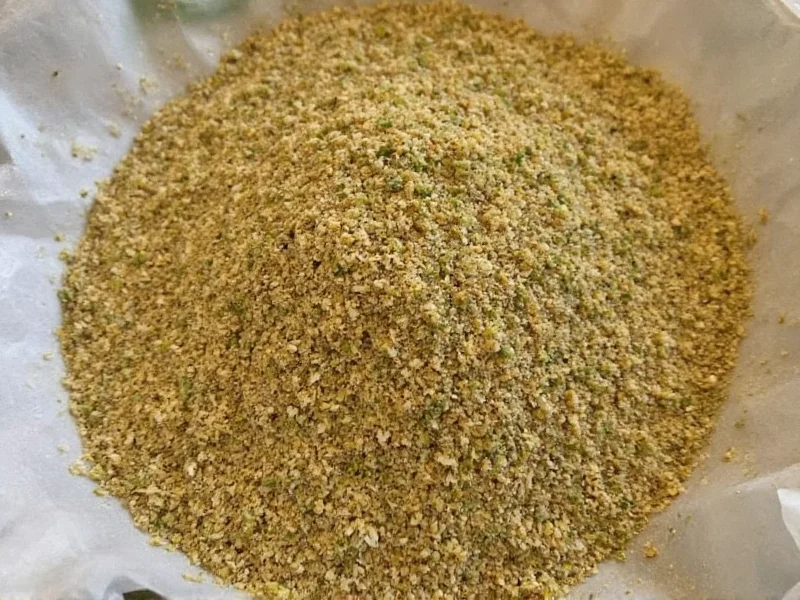When you're mid-recipe and realize you've run out of coriander, knowing reliable substitutes can save your dish. Coriander exists in two forms—ground seeds with warm, citrusy notes and fresh leaves (cilantro) with bright, herbal flavor—requiring different replacement strategies. Understanding these distinctions is crucial for successful substitution.
Understanding Coriander and Substitution Needs
Coriander refers to both the seeds of Coriandrum sativum (used ground) and its fresh leaves (commonly called cilantro in the Americas). Many cooks confuse these forms, leading to failed substitutions. Ground coriander contributes earthy, lemony depth to spice blends, while fresh coriander leaves provide vibrant finishing notes. Running out of either mid-recipe is common, making reliable substitutes essential knowledge for home chefs.
Top Substitutes for Ground Coriander
When your recipe calls for ground coriander seeds, these alternatives maintain flavor balance while adapting to available pantry items:
| Substitute | Ratio | Best For | Flavor Notes |
|---|---|---|---|
| Cumin | 1:1 | Curries, stews, roasted vegetables | Earthy with less citrus, slightly smokier |
| Garam masala | ½ tsp per 1 tsp coriander | Indian dishes, meat marinades | Complex warmth with cardamom/cinnamon notes |
| Caraway seeds (ground) | ¾ tsp per 1 tsp coriander | Bread, sauerkraut, European dishes | Sharper anise flavor, use sparingly |
| Fennel seeds (ground) | ¾ tsp per 1 tsp coriander | Fish dishes, Mediterranean cuisine | Sweeter licorice notes, milder citrus |
Best Alternatives for Fresh Coriander Leaves
Fresh coriander (cilantro) substitution requires different considerations since its bright flavor diminishes when cooked. These replacements work well in salsas, garnishes, and fresh preparations:
- Parsley-cilantro blend (equal parts): Maintains visual appeal while approximating cilantro's freshness—ideal for coriander substitute when out of fresh coriander in salsa
- Thai basil (¾ amount): Offers similar herbal quality with subtle anise notes—perfect for Southeast Asian dishes
- Mint (½ amount): Provides comparable brightness with cooling notes—excellent in Middle Eastern recipes
- Dill (⅔ amount): Works well in fish dishes and yogurt sauces where fresh coriander leaf substitute for tzatziki is needed
Advanced Substitution Strategies
For specific culinary applications, these targeted approaches deliver optimal results:
Indian Cooking Substitutions
When seeking best coriander substitute for Indian cooking, combine ½ tsp cumin + ¼ tsp turmeric + pinch of cardamom per teaspoon of coriander. This blend mimics coriander's role in garam masala while maintaining authentic flavor profiles. Avoid using straight cumin in delicate kormas—opt for ¾ tsp garam masala instead.
Mexican Cuisine Solutions
For fresh coriander leaf substitute for salsa, use equal parts flat-leaf parsley and mint. The parsley provides visual similarity while mint contributes the bright top notes cilantro delivers. Add a squeeze of lime to enhance the herbal quality. When substituting ground coriander in mole sauces, use equal parts cumin with a pinch of dried oregano.
Pro Tips for Successful Substitution
Master these techniques to improve your coriander powder substitute ratios and avoid common pitfalls:
- Adjust gradually: Start with ¾ of the recommended substitute amount, then taste and adjust
- Consider cooking time: Add fresh substitutes at the end of cooking like you would coriander leaves
- Balance acidity: A splash of lemon juice can mimic coriander's citrus notes in ground form
- Toast whole seeds: When using caraway or fennel as coriander seed alternative with similar flavor, toast before grinding for enhanced aroma
- Combine substitutes: For complex dishes, blend two substitutes (e.g., cumin + fennel for Mediterranean recipes)
When Substitution Won't Work
Certain recipes rely so heavily on coriander's unique chemistry that substitutes fall short. Traditional dhania (coriander) chutney, certain Persian dishes featuring fresh coriander as the primary herb, and some spice blends like berbere require authentic coriander for proper flavor development. In these cases, consider modifying the recipe rather than forcing a substitution.
Storing Substitutes for Future Use
Keep these substitutes pantry-ready by storing ground spices in airtight containers away from light. Freeze fresh herb blends in ice cube trays with olive oil for quick access. Toast whole seeds like cumin or fennel just before grinding to maximize flavor when you need a ground coriander replacement in recipes.











 浙公网安备
33010002000092号
浙公网安备
33010002000092号 浙B2-20120091-4
浙B2-20120091-4